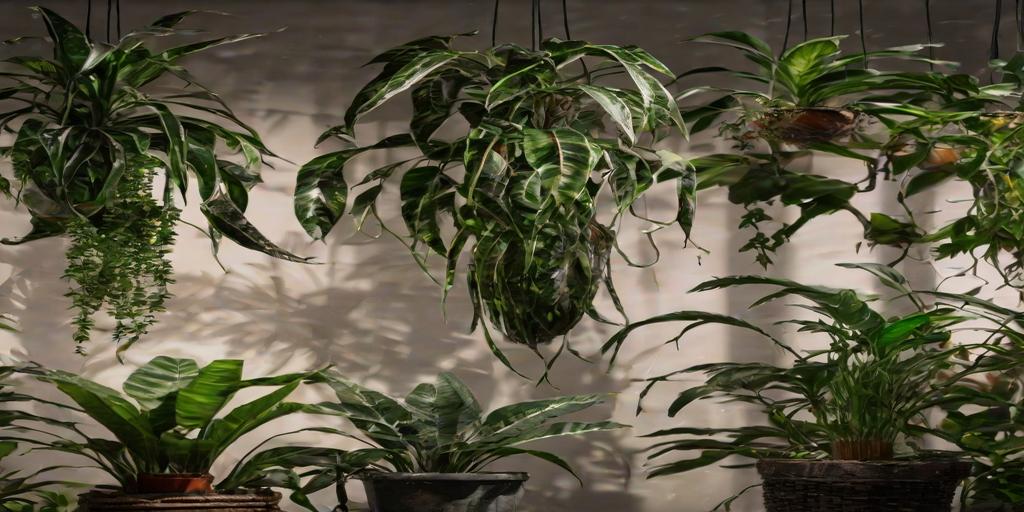
Reptile-Safe Low Light Hanging Plants: A Safe & Stylish Habitat Guide
Discover the best reptile-safe low light hanging plants to enhance your terrarium! Learn which non-toxic, easy-care plants thrive in dim environments while keeping your scaly friends safe.
Introduction
Did you know that many common houseplants can be toxic to reptiles? Creating a lush, natural habitat for your pet doesn’t have to be risky—especially in low-light conditions! Whether you have a crested gecko, bearded dragon, or snake, choosing the right hanging plants can transform their space into a thriving jungle. In this guide, we’ll explore the safest, most resilient low-light plants that drape beautifully while keeping your reptile healthy. Let’s dive in!
Why Choose Reptile-Safe Low Light Hanging Plants?
Benefits of Live Plants in Reptile Enclosures
Live plants aren’t just decorative—they play a key role in your reptile’s habitat. They help regulate humidity, which is crucial for species like crested geckos or tropical snakes. Plants also provide enrichment, encouraging natural behaviors like climbing and hiding. Plus, they make the enclosure look more vibrant and natural compared to artificial decor.
Risks of Toxic Plants & Why Low-Light Varieties Work Best
Not all plants are safe for reptiles—some can be toxic if ingested or cause skin irritation. Low-light plants are ideal because many reptile habitats don’t have intense lighting, and these varieties thrive in dimmer conditions. Choosing reptile-safe plants ensures your pet stays healthy while still enjoying a lush environment.
Maximizing Space with Hanging Plants
Hanging plants are perfect for small or vertically oriented enclosures. They free up floor space while mimicking the natural canopy of forests or jungles, giving arboreal reptiles like chameleons or tree frogs more climbing opportunities.
Top Reptile-Safe Low Light Hanging Plants
Pothos (Epipremnum aureum)
Pothos is a favorite for reptile keepers—it’s nearly indestructible, grows quickly, and is safe for most reptiles. Its trailing vines create excellent cover, and it tolerates low light and occasional neglect.
Spider Plant (Chlorophytum comosum)
Spider plants are non-toxic and help purify the air in the enclosure. They produce offshoots that can be propagated easily, making them a cost-effective choice.
Boston Fern (Nephrolepis exaltata)
This fern thrives in humid environments, making it great for tropical setups. Its dense foliage provides hiding spots and helps maintain moisture levels.
Parlor Palm (Chamaedorea elegans)
A pet-friendly option, the parlor palm adds a tropical feel without needing bright light. It grows slowly, so it won’t take over the enclosure.
String of Hearts (Ceropegia woodii)
This trailing plant is safe for reptiles but should be monitored if your pet is prone to nibbling. Its delicate vines add a beautiful, cascading effect.
How to Care for Low Light Hanging Plants in Reptile Tanks
Choosing the Right Soil
Use a well-draining, organic soil mix to prevent mold and pests. Avoid soils with added fertilizers or perlite, as some reptiles may try to eat them.
Watering Without Overdoing It
Overwatering can lead to root rot and excessive humidity. Water only when the top inch of soil is dry, and ensure proper drainage to prevent stagnant water.
Pruning & Maintenance
Trim dead leaves regularly to keep plants healthy and prevent decay. Check for pests like mites or fungus gnats, which can harm both plants and reptiles.
Signs of Plant Stress
Yellowing leaves, wilting, or mold growth indicate stress. Adjust lighting, watering, or airflow as needed to revive struggling plants.
Setting Up Hanging Plants in Your Reptile Enclosure
Secure Mounting Options
Use suction cups, reptile-safe hooks, or attach plants to terrarium backgrounds. Ensure they’re firmly anchored so they won’t fall and injure your pet.
Placement for Different Reptiles
For climbing species (like geckos or anoles), place plants near branches or ledges. For ground-dwellers, keep them higher to avoid obstruction.
Combining Plants with Other Decor
Mix hanging plants with vines, logs, and rocks to create a naturalistic layout. This provides both visual appeal and functional hiding spots.
Common Mistakes to Avoid
Using Harmful Chemicals
Avoid pesticides or fertilizers not labeled as reptile-safe. Even natural sprays can be toxic—opt for manual pest removal instead.
Overcrowding the Enclosure
Too many plants can restrict movement and airflow. Leave enough open space for your reptile to explore comfortably.
Choosing High-Light Plants
Plants that need bright light will struggle in dim terrariums. Stick to low-light varieties to ensure they thrive without extra lighting.
Conclusion
Reptile-safe low light hanging plants are a game-changer for creating a beautiful, functional habitat! From pothos to spider plants, these options are easy to care for and safe for your scaly companion. Ready to upgrade your terrarium? Start with one or two of these picks and watch your reptile’s home come to life. Share your setup with us in the comments—we’d love to see your creations!
